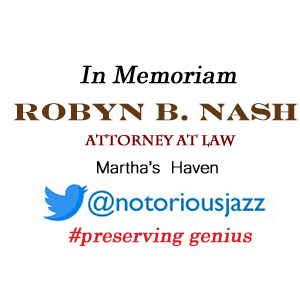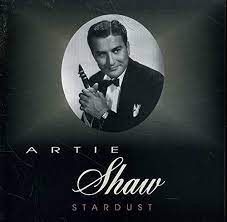
Daily Dose Of Jazz…
Lennie Hayton was born Leonard George Hayton on February 14, 1908 in New York City into a Jewish family. He developed a penchant for the piano when he was six years old, showing unusual interest in the early classics from the rolls of the family player piano. His parents disliked jazz, so it wasn’t until he was sixteen that he really discovered it. He left high school to become pianist with the Broadway Hotel Orchestra of Cass Hagen, a boyhood friend.
While playing at the Park Central, Hayton was heard by Paul Whiteman and immediately engaged by him in 1928 as second pianist, playing piano and celeste as well as acting as a part-time arranger. Whilst with the orchestra, he played with Frankie Trumbauer, Bix Beiderbecke, Red Nichols, Joe Venuti and became friendly with Bing Crosby, then a member of The Rhythm Boys. However, by 1930 due to the impact of radio on audiences, Whiteman released ten members of the band. Hayton then joined the Charles Previn Orchestra.
Rejoining Crosby he embarked on a cross-country tour, landing in Hollywood. 1932 saw Hayton leading an orchestra for his first recordings of Cabin in the Cotton, Love Me Tonight, Brother, Can You Spare a Dime? and Some of These Days all became Bing hits. The following year , Hayton became the musical director for the Chesterfield radio series Music That Satisfies which again featured Crosby and ran for 13 weeks.
His involvement with Crosby continued as musical director for the singer’s 1933 film Going Hollywood at Metro-Goldwyn-Mayer. This led to a major career for Hayton who continued to work with Crosby and became a musical director for MGM and guided it through its prime years as foremost producer of movie musicals. Up until his retirement from the post in 1953, Lennie racked up four Oscar nominations: The Harvey Girls, The Pirate, Singin’ in the Rain and Star! He won the Academy Award for music for On the Town and Hello, Dolly!.
He arranged for Frank Sinatra, composed Apple Blossoms with Joe Venuti, Frankie Trumbauer, and Eddie Lang, and his other compositions included Flying Fingers, The Stage is Set, Mood Hollywood with Jimmy Dorsey, and Midnight Mood. Hayton also co-arranged the Hoagy Carmichael composition Stardust with Artie Shaw for Bluebird Records.
His first marriage to Helen Maude Gifford ended in her death in 1943. Three years later he married Lena Horne whom he met on the MGM lot. Throughout the marriage, Hayton also acted as Horne’s music director. Facing the stresses and pressures of an interracial relationship, they had a tumultuous marriage, first based upon her desire to advance her career and cross the color-line in show business, but she had learned to love him very much.
Pianist, composer, conductor and arranger Lennie Hayton, whose trademark was a captain’s hat worn at a rakish angle, died of a heart attack while separated from Horne, in Palm Springs, California on April 24, 1971.
More Posts: arranger,composer,conductor,history,instrumental,jazz,music,piano
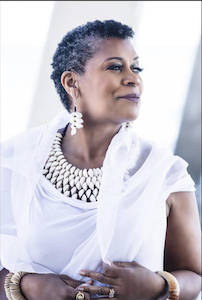
LENORA HELM HAMMONDS
New England Symphonic Ensemble
Guest Conductor: Lenora Helm Hammonds ~ Department Chair & Director of Graduate Programs, Jazz, at North Carolina Central University in Durham, North Carolina.
She will be conducting commissioned arrangements for jazz choir and jazz chamber orchestra of Hale Smith’s The Valley Wind and John Coltrane’s A Conversation with God (Based on Coltrane’s Dear Lord) | Lyricist: Lenora Zenzalai Helm | Arranger ~ Maurice Myers & Lenora Zenzalai Helm
Hammonds will be joined by Jillian Harrison-Jones, Lorissa Mason, and Anne Lyman, Conductors
More Posts: adventure,arranger,conductor,genius,jazz,music,preserving,travel,vocal

MARIA SCHNEIDER ORCHESTRA
Maria Schneider’s music has been hailed by critics as “evocative, majestic, magical, heart-stoppingly gorgeous, imaginative, revelatory, riveting, daring, and beyond categorization.” Blurring the lines between genres, her varied commissioners stretch from Jazz at Lincoln Center to The Saint Paul Chamber Orchestra to the American Dance Festival, and include collaboration with David Bowie. She is among a small few to receive Grammys in multiple genres, having received the award in jazz and classical, as well as for her work with David Bowie.
Schneider’s many honors also include: 14 Grammy-nominations, 7 Grammy Awards, numerous Jazz Journalists Association awards, DownBeat and Jazztimes Critics and Readers Polls awards, an honorary doctorate from her alma mater, the University of Minnesota, ASCAP’s esteemed Concert Music Award (2014), the nation’s highest honor in jazz, “NEA Jazz Master” (2019), and election into the 2020 American Academy of Arts and Sciences.
More Posts: adventure,album,club,composer,conductor,festival,genius,jazz,museum,music,preserving,restaurant,travel
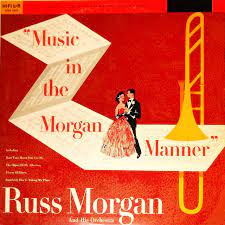
Daily Dose Of Jazz…
Russell Morgan was born on April 29, 1904 in Scranton, Pennsylvania into a Welsh family. He was encouraged to express himself musically from the age of seven. His father was a former drummer, his mother a pianist in a vaudeville act. He began studying piano and worked in the mines with his father to earn money to help support the family and pay for his lessons.
By 14, he was earning money as a pianist in a Scranton theater. Purchasing a trombone he learned to play and in 1921 he played trombone with the Scranton Sirens, a popular band in Pennsylvania. Russ moved to New York in 1921 at 18 and three years later he was writing arrangements for John Philip Sousa and Victor Herber. He then joined Paul Specht’s orchestra and toured throughout Europe with the likes of Paul Whiteman, Charlie Spivak, and Artie Shaw. After returning from Europe, Jean Goldkette invited him to Detroit, Michigan to lead his band with former associates Tommy and Jimmy Dorsey, Chauncey Morehouse, Joe Venuti, Eddie Lang, Bix Beiderbecke, and Fuzzy Farrar.
His first records were made for OKeh in mid 1930 and for Parlophone and Odeon, usually under the name Russell Brown and his Orchestra. During the early 1930s, Morgan joined the group of anonymous studio groups recording pop tunes for the dime store labels, which included Banner, Melotone, Oriole, Perfect, Romeo, Conqueror, and Vocalion.
For a short time in the Thirties he arranged for Fletcher Henderson’s Orchestra. In 1935, he played trombone with the Original Dixieland Jazz Band when they recorded four sides for Vocalio and two sides for Brunswick. He was offered the position of musical director for Detroit radio station WXYZ and his show, Music In The Morgan Manner, became one of the most popular radio shows.
An automobile accident in the early 1930s nearly sidelined his career but after several months in the hospital, Russ started again in New York City as an arranger for the George White Scandals, the Cotton Club Revue, and the Capitol Theatre. When not arranging for the Broadway shows, he worked as a pianist or trombonist with orchestras led by Phil Spitalny, Eddie Gilligan, Ted Fio Rito, and Freddy Martin.
He would go on to join the Freddy Martin Orchestra, become music director at Brunswick, hosted The Russ Morgan Show on the Mutual Broadcasting System and formed an orchestra at Rudy Vallee’s insistence. He landed his first engagement at the Biltmore along with Vallee’s band. He was music director for the Rinso-Lifebuoy Show on NBC and the Philip Morris radio series on NBC and CBS for two years.
Through his career he had four songs that charted, was music director for NBC and CBS and hosted television shows, On August 7, 1969 trombonist, arranger, composer, conductor and bandleader Russ Morgan, who has a star on the Hollywood Walk of Fame, transitioned at the age of 65 in Las Vegas, Nevada.
More Posts: arranger,bandleader,composer,conductor,history,instrumental,jazz,music,trombone
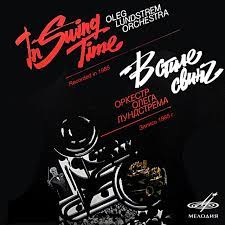
Daily Dose Of Jazz…
Oleg Leonidovich Lundstrem was born April 2, 1916 into a family of musicians in Chita, Transbaikal Oblast. His family moved to Harbin, China when he was five. By 1935, inspired by Duke Ellington’s Dear Old Southland record which he purchased, he joined forces with eight other young Russian amateur musicians and formed the Oleg Lundstrem Orchestra. The following year the band moved to Shanghai, China where they immediately became popular among the public. The band was an important part of Shanghai’s jazz scene until 1947, along with Buck Clayton Orchestra.
After World War II, in 1947 Oleg returned to the Soviet Union and settled in Kazan, where he worked as a violinist in the opera and ballet theatre, while keeping his jazz orchestra as a side act. 1956 saw the Oleg Lundstrem Orchestra moving to Moscow where he was appointed by the Soviet cultural authorities as the orchestra’s art director and conductor.
His orchestra was recognized by the Guinness Book of Records as the oldest continuously existing jazz band in the world, the official name being The State Oleg Lundstrem Chamber Orchestra of Jazz Music.
Composer and conductor Oleg Lundstrem, also spelled Lundstroem or Lundström, transitioned from natural causes at his home on October 14, 2005 in Korolyov, Moscow Oblast at the age of 89.
More Posts: bandleader,composer,conductor,history,instrumental,jazz,music,violin



